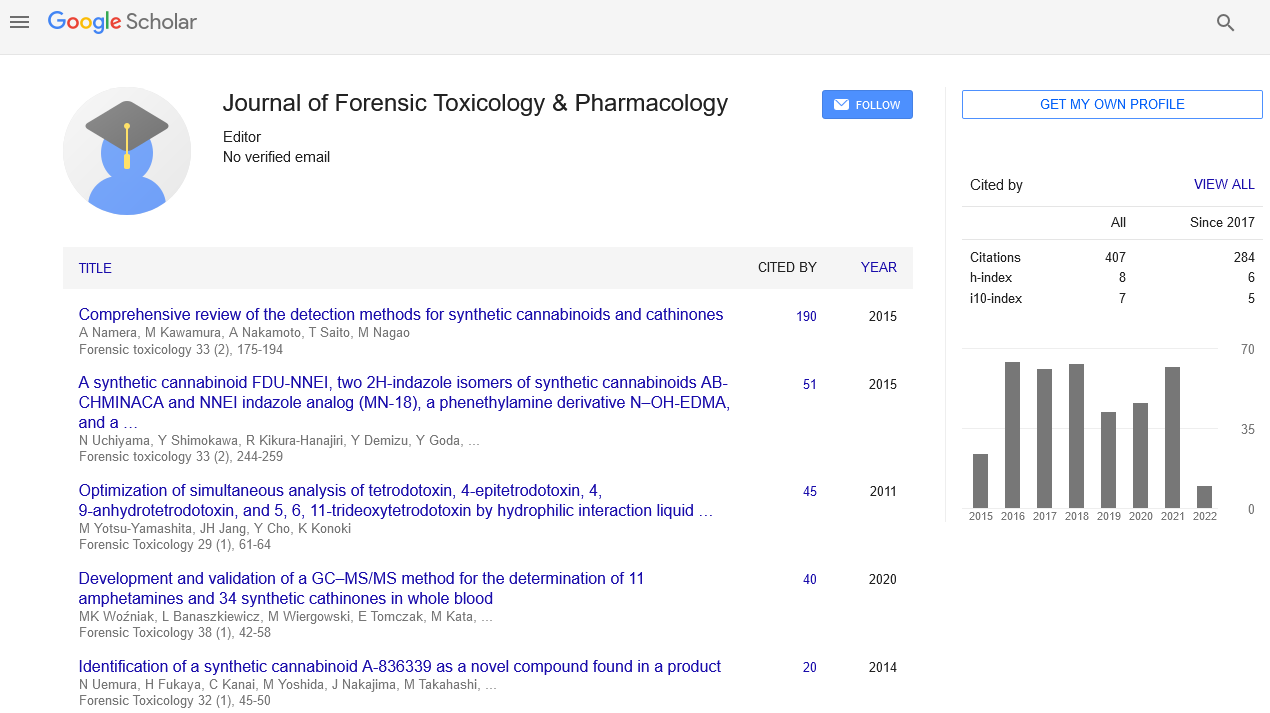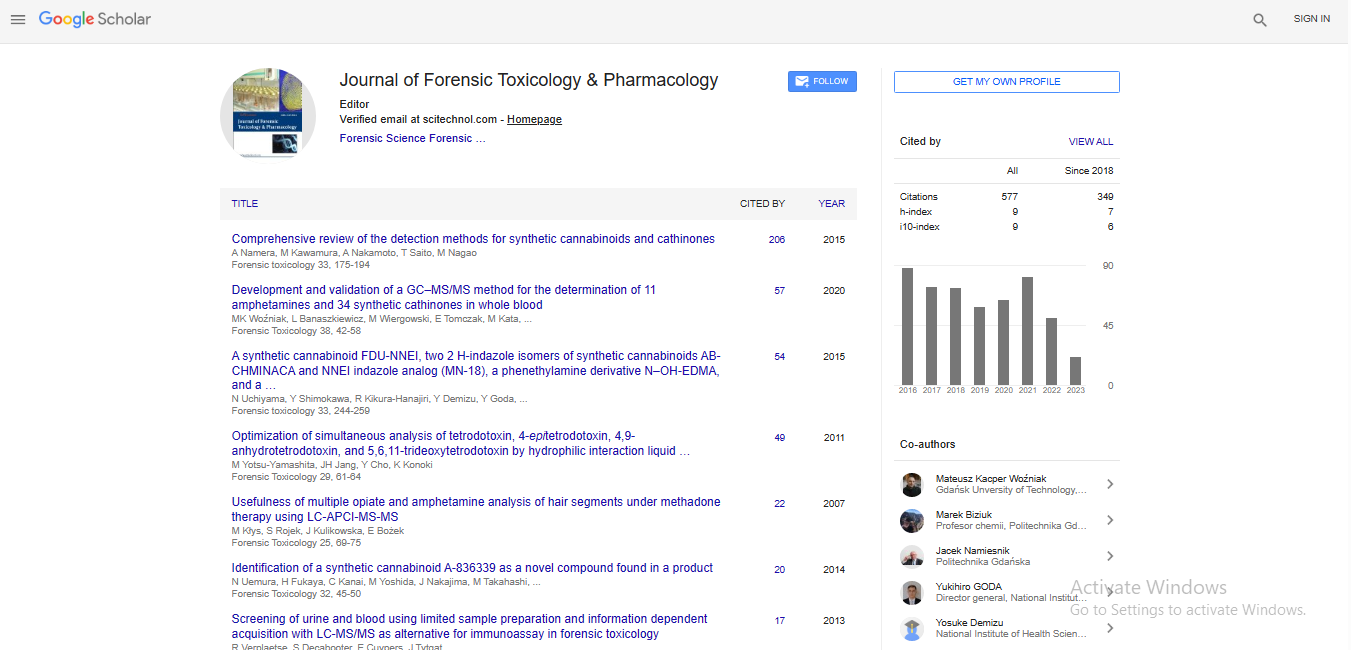Targeted RNAi therapeutics with an optimized HK carrier
A J Mixson
University of Maryland School of Medicine, USA
: J Forensic Toxicol Pharmacol
Abstract
Statement of the Problem: The development of non-viral carriers for clinical studies has been painstakingly slow. Histidinerich peptide mirror many of the properties of polyethylenimine (PEI) as carriers of nucleic acids, in that they contain both cationic and endosomal releasing components to increase transfection. Although these peptide carriers are less toxic than PEI, toxicity including cytokine induction and transfection efficiency in vivo may limit the utility of these peptide carriers. Methods: Solid phase methods was used for the synthesis of HK peptides that varied in their sequence patterns and branching. Silencing assays assessed the ability of the HK carrier to decrease luciferase or the Raf-1 oncogene in tumors cells or in tumor xenografts. Modifications of the peptide by pegylation and ligand (RP) were compared to unmodified HK peptides in pharmacokinetic and silencing studies. Multiplex bead-based and ELISA assays measured cytokine levels. Findings: With non-invasive imaging, systemically administered surface-modified RP HK:siRNA nanoplexes showed nearly 4-fold greater blood levels, 40% higher accumulation in tumor tissue and 60% lower luciferase activity than unmodified HK:siRNA nanoplexes. We then determined whether the surface-modified RP HK:siRNA nanoplex was more effective in reducing MDA-MB-435 tumor growth with an siRNA targeting Raf-1. Repeated systemic administration of the selected surface-modified RP HK:siRNA nanoplexes targeting Raf-1 showed 45% greater inhibition of tumor growth than unmodified HK:siRNA nanoplexes and 90% greater inhibition of tumor growth than untreated mice. Cytokine induction was minimal with the modified HK polyplexes compared to the unmodified polyplexes. Conclusions: The results show that targeted HK:siRNA nanoplexes gave a significantly greater reduction of the targeted gene expression in the tumor. This resulted in marked decrease in tumor growth rate with histochemistry measurements of downstream effects supporting siRNA-mediated mechanism of action for the observed efficacy.
Biography
A J Mixson has been working in the Pathology Department at the University of Maryland, School of Medicine since 1994 with an initial focus on non-viral delivery of anti-angiogenic nucleic acids (plasmids, siRNA, DNAzymes) with liposomes utilizing either in vitro or in vivo model systems. He has been awarded several US and European patents on gene therapy and anti-angiogenesis.
Email: Jmixson@som.umaryland.edu
 Spanish
Spanish  Chinese
Chinese  Russian
Russian  German
German  French
French  Japanese
Japanese  Portuguese
Portuguese  Hindi
Hindi 
